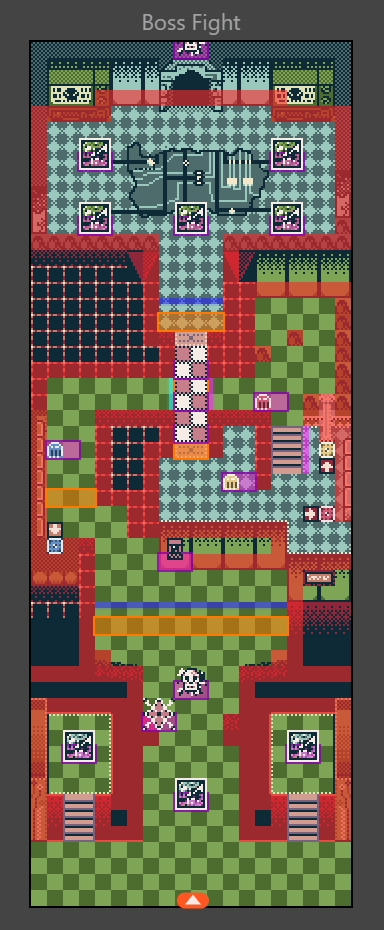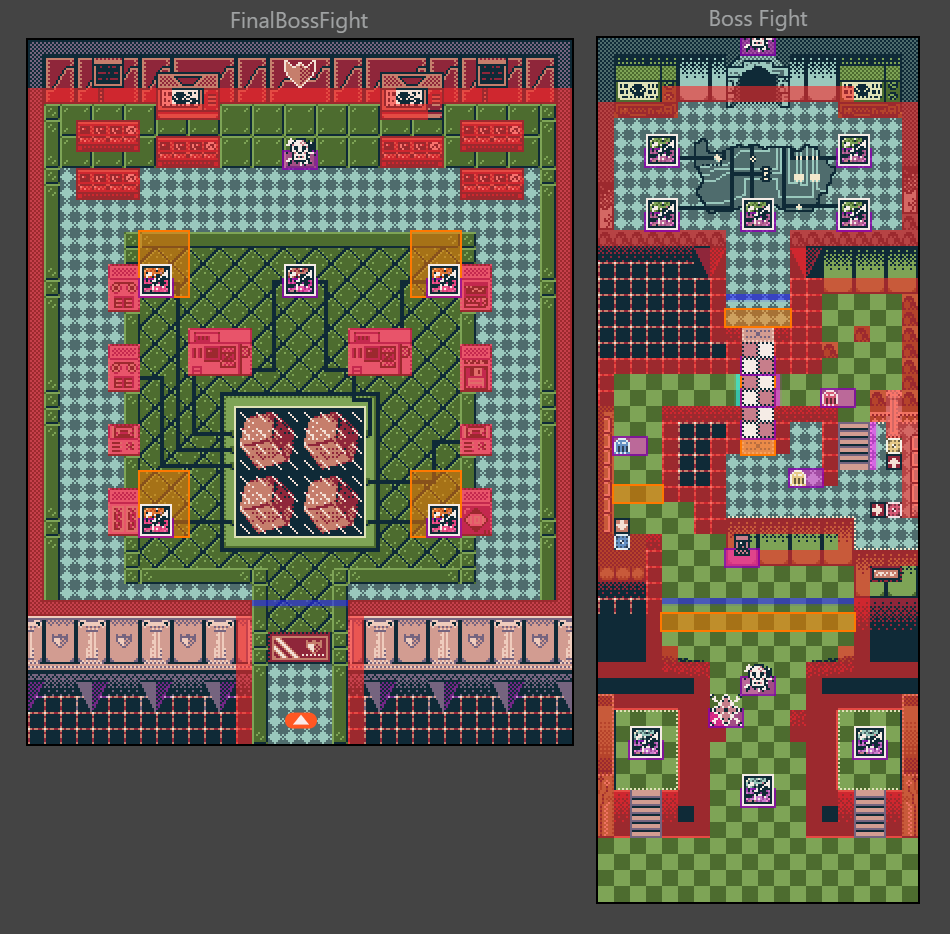Scope creep? Adding a final confrontation

Hello friends!
It has been a while since the last update, a little over two weeks. But be sure that I have been working hard in my free time on the game and I am very proud of the progress that has been made. For this devlog I thought of sharing something a bit longer than a general update and talking about something on my mind these two weeks; Scope creep. When is adding more scope justified and when does it become something that unnecessarily adds to development time and drains resources?
Scope creep is by its very nature gradual and sneaks up on you. It almost always seems like a good idea at the time, even necessary. But a game must be finished sometime; continuously adding features and polishing a game to no end will cause trouble.
So with some sort of explanation on why scope creep is bad, why has it been bothering me for these weeks? It all has to do with the work for the game's boss fight. In the last update, I expressed my dissatisfaction with how the boss sequence in the game jam version turned out. It was rushed, not challenging and I had the constraint that the whole game had to be beatable within 5 minutes. After the game jam that restriction was lifted and I started to design the boss battle (Image below).

The second finished iteration of the boss fight sequence.
So for the second iteration of the boss fight, I decided that adding stages to the fight itself would bring more opportunity and space for a fun experience. A Gameboy screen is not large at all and using the space you have along with other limitations like unique tiles and the number of actors on screen is paramount. So I decided to size the scene into three screens tall, divided with a blue line in the picture above. So now the scene had three different segments and gameplay elements. The top one is the third and last segment where the boss would shoot a projectile at the player who would have to dodge it and try to make it destroy itself. This was compact, simple, and very doable. Even with the limited programming knowledge I have. But for some reason, I felt that it didn't work. It took days and I then came to the thought that the final area was too small for a proper fight to happen. I could make it larger but the limit of unique tiles and scene size were reaching its maximum capacity.
Eventually, I decided to take that last third of the boss fight and give it its scene. This decision may seem like scope creep at first glance, at least that was what I worried about. I knew that this decision would at least double the development time for the boss fight.

Left: The added scene and final confrontation. 34x44 tiles.
Right: The older scene with three segments, including its final confrontation. 20x54 tiles.
There were several factors that I took into consideration when I decided to expand the scope of the boss sequence. These were:
- The need for a worthy conclusion
- The game is being made as a narrative adventure game. Even a short story, needs a satisfying climax, and the older version boiled down to running up and poking the boss. Narratively it is supposed to be an epic fight, but that wasn't reflected in the gameplay.
- Better gameplay dynamic
- The tight space of only using the size of one screen to move around was hampering the whole experience at the end. The boss shoots projectiles and the player barely has any space to avoid them. The projectiles themselves had to be set to a slow speed. That brought problems, like spawning too many actors on screen at the same time. The boss now also has more space to move in and can even make dash attacks.
- Added value of the game to the player
- The extra scene for the boss sequence allows for a meaningful extension of playtime in one playthrough. It was needed after the restriction of 5 minutes was lifted. A whole new scene also increased the number of unique tiles that could be dedicated to this event. The Gameboy can only have 192 unique 8x8 pixel tiles in one scene. That is around half of the tiles that make up one Gameboy screen. I hope the added scene will let the player see more details of the in-game world with the added graphical assets.
- Scale and feasibility
- Perhaps The most important point? Of course, adding more value is most likely good for a game as a whole. But the scale has to be proportional to the benefit that it brings. As said before, it brings a cost in the form of time in this case. The older version is 1080 tiles in total. The new scene adds 1496 tiles, bringing the whole event to a total of 2576 tiles to pack gameplay for the player.
In hindsight with the above considerations, the addition of a final boss confrontation scene was a justified and beneficial change to the game. It not only elevated the overall gameplay experience but also provided a fitting conclusion to the player's journey. As developers, it's crucial to remain flexible and open to iteration, always striving to enhance the player's enjoyment while staying true to the core vision of the project. It is perhaps that part, staying true to the core, that best reins in the dreaded scope creep.
Or I'm just coping with spending so much time working on the boss fight.
Anyway, I hope that you have enjoyed this post and found my experience interesting.
Cheers!
Alex
Get Grid Angel: Bug Byte
Grid Angel: Bug Byte
Reawaken amidst glitches, restore order in cyberspace!
More posts
- From me to you: Thanks for 100!Jun 15, 2025
- Summer PlansJul 11, 2024
- Designing Grid AngelMay 09, 2024
- Boss fight and avatar updatesApr 02, 2024
- Working on upgrades!Mar 18, 2024
- Judges' Choice Winner!Mar 11, 2024

Leave a comment
Log in with itch.io to leave a comment.